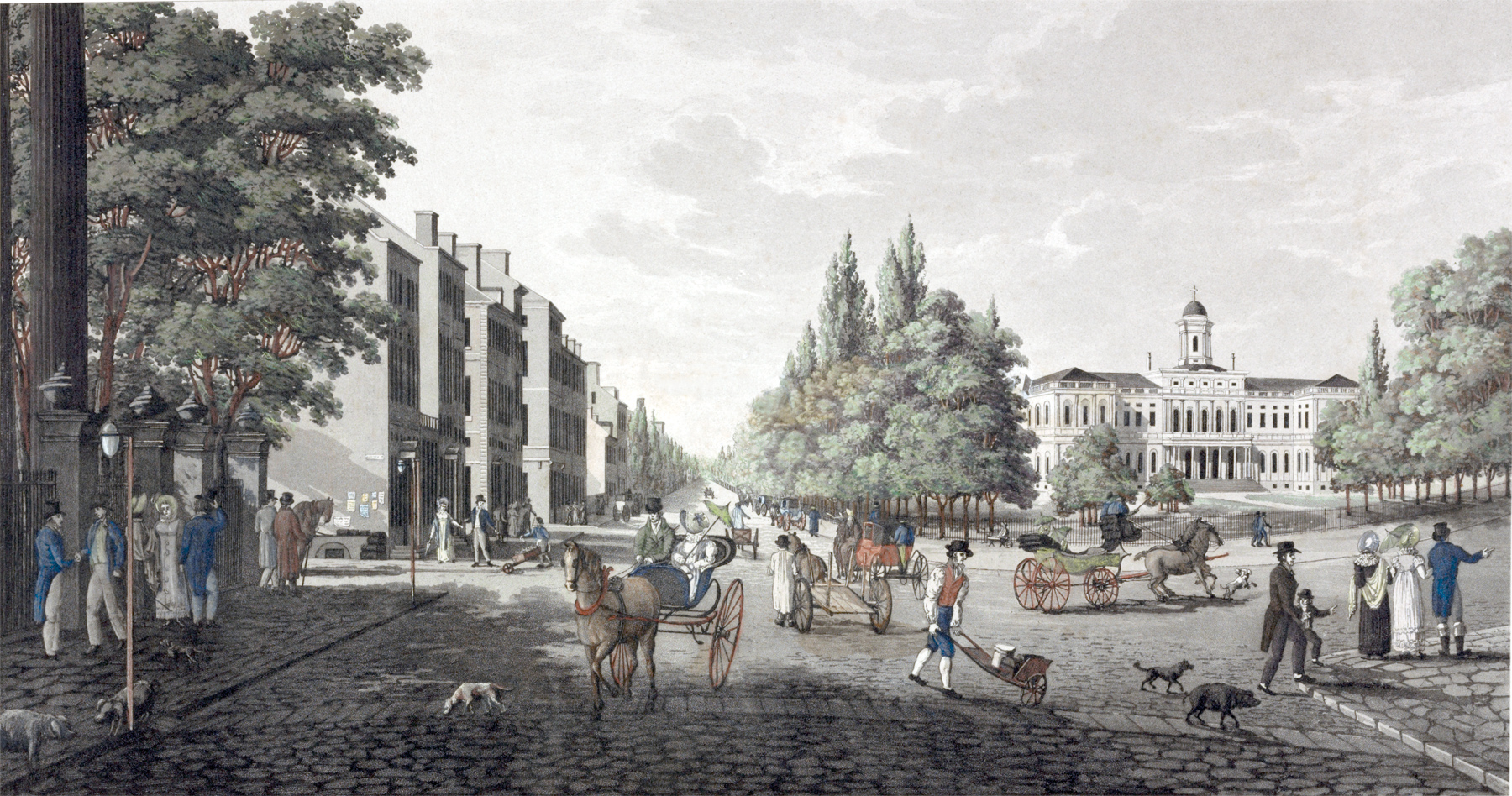
Broadway and City Hall in New York - 1819
Broadway, looking north, and City Hall in New York, depicted in 1819, published in 1824. Original title (Swedish): Brodway-Gatan Och Rådhuset i New York. Etcher Carl Fredrik Akrell (Swedish, 1779–1868), after drawing by Baron Axel Leonard Klinckowström (Swedish, 1775–1837). Source: Atlas til Friherre Klinckowstréms Bref om de Forente Staterne (Atlas to [accompanying] Baron Klinckowström’s Letters about the United States), New York Public Library.
The New York City Hall opened in 1812. Chatham Street (now Park Row) is on the right. St. Paul's Chapel is to the left (this illustration shows its northernmost column of the pedimented façade). By 1820, this area had become a shopping destination for New York's fashionable and sophisticated elite. This part of Broadway, north of Vesey Street, was formerly called Great George Street. It was renamed Broadway in 1794 and it was paved with stone in the late 18th century. Continue below...

According to Stokes (Iconography of Manhattan Island, ...1918), this is one of the early views of City Hall Park and Broadway. We know from the Klinckowström’s Letters that this view was made in 1819. His description of the City Hall (translated) is as follows:
"About a third of the length of the street [Broadway] from the Battery you come across a large 3-cornered place, which is shaded by beautiful trees. Here is the City Hall. It is built in a light and very pretty style. As I have made a correct drawing of this place and of Broadway, and Chatham [Street] you will get a good idea of this part of New York, which really is attractive. In the same drawing you will see the costumes in use here, and also all the vehicles from the elegant coach down to the modest pushcart, on which the licensed porter is busily transferring the traveller’s belongings to the harbour".
Stokes noted that "there was never a cross on the cupola of the City Hall, which was, in 1819, as it is at the present day, surmounted by the figure of Justice" and "The iron railing around the Park was but partially constructed in 1818 (...), and was completed in 1821". The old Rutherfurd house, to which a storey has been added since its appearance on Plate 68-b [1798], will be recognised on the north-west corner of Vesey Street. In 1819, Elijah Secor, a merchant, resided here, while No. 221, just to the north, was occupied by Ryerson & Thompson, merchants. No. 221 is also given in the directory for 1819-1820 as the address of Daniel Fraser, who kept a boarding-house, possibly in the upper part of the building. No. 223 was the residence of John Jacob Astor, while No. 225 was occupied by David Lydig". "The lamp-posts standing along the sidewalk in front of St. Paul’s Chapel show the type in use before the introduction of gas, in 1827".
City Hall
Vesey Street
Chatham Street
Broadway and City Hall in New York - 1819
Broadway
|
Copyright © Geographic Guide - 19th Century NYC. Historical Heritage. |
